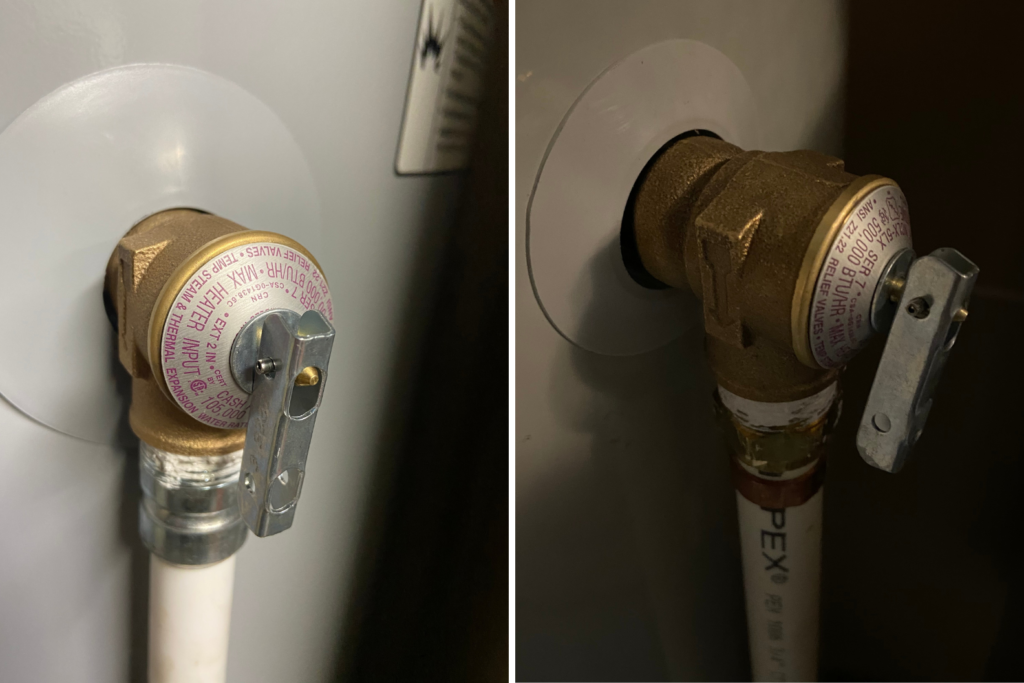Without a doubt, your home’s plumbing system is filled with so many integral components that you need working on a daily basis. Whether it be a bathtub, shower, faucets, sewer line, water lines and various others, these are just a few of the things that you use every single day. As such, when there’s an issue with one of these plumbing pieces, it can be very frustrating to deal with. Yet another item that you always need working is the water heater! This is particularly true during these cold Kansas City winters, right?
From installing new water heaters and repairing existing units to routine maintenance and so on, it’s safe to say our team of plumbing professionals work with water heaters on numerous occasions throughout the year. With that being said, it’s also no surprise they are a popular topic that we discuss regularly here on our plumbing blog too! So…on this week’s blog, we’re going to take an inside look at an invaluable water heater component. A water heater is made up of various pieces designed to keep it running effectively, efficiently AND safely! Believe it or not, there are several different pieces that make up a water heater and each serves a unique purpose. In the blog that you’re about to read, we’ll be analyzing one that emphasizes safety and helps prevent true water heater emergencies from occurring. This component is called the T&P valve. If you don’t know what a T&P valve looks like or why it’s so important to the water heating process, this will definitely be a worthwhile read. At the very least, knowing the role it serves and how to detect when there’s an issue with it will definitely be useful information for any homeowner! With that introduction in-place, let’s now take a look at T&P valves!
What is a T&P valve?
To kick off this blog, it’s important to know “T&P” stands for temperature and pressure relief valves. Water heaters are designed to operate safely within a set temperature and pressure range. If either of these exceed the recommended parameters, would you agree that trouble could ensue? Well, your T&P valve is there to provide relief whenever the temperature or pressure gets too high. When the temperature or pressure reaches these high levels, the T&P valve opens up and lets some water out. If this happens from time-to-time, you may consider lowering the temperature on your water heater to possibly fix the issue. However, it’s also important to note that the T&P valve shouldn’t be opening on a frequent basis. If this is the case, it’s definitely worth looking deeper into and you may want to have your local plumber get eyes on the situation to determine whether or not the T&P valve may need to be replaced altogether.
Where is the T&P valve located?
Depending on the manufacturer/brand of water heater that you have installed in your home, you’ll notice that a T&P valve can be located in two different spots. Nonetheless, it will still be easy to find. A water heater includes several pieces, both inside and outside the unit. With the T&P valve residing on the exterior, it will be easy to discuss it here on this blog post. As I just mentioned, the exact location can vary based on the manufacturer, but it will either be located on the side of the tank’s exterior (higher up on the heater) or on the top of the tank’s exterior. The reason why I said it will be easy to find is because even if you aren’t familiar with the exact appearance of a T&P valve, there is a discharge pipe that connects to the valve and runs down along the side of the tank. Once you find that pipe, you can simply follow it up until you hit the T&P valve. As a side note, feel free to take a look at the thumbnail for this blog post if you’re looking for a photo of the actual valve.
How long do T&P valves last?
It’s safe to say the estimated lifespans of various plumbing components can vary as a result of a few different factors. That is true in regards to faucets, toilets, water heaters as a whole and even the water heater’s T&P valve. However, just as we recommend with a home’s sump pump, the easiest way to know if your T&P valve is working properly is to test it. To sum it up, this just helps ensure it will be ready to go in the event that the pressure or temperature inside your water heater were ever to get too high. If a T&P valve is opened and no water comes out, then this is an instant red flag that something is likely wrong with the valve. While you’ll see that recommendations online for testing it will vary, doing so once a year should be a relatively safe place to start with.
Now that you know why it’s important to test it and make sure everything is working correctly, back to the original question of this section: how long can you expect T&P valves to actually last? In most cases, you can expect to get roughly 4-5 years out of a T&P valve. Granted this number isn’t an exact figure to use, it does provide an estimation for this extremely important water heater safety feature!
What are the signs of a failing T&P valve?
Along with testing the T&P valve and noticing the presence of issues, you might wonder if there are any other signs of a T&P valve that needs to be replaced. One obvious sign that something isn’t right would be when a T&P valve is repeatedly opening and closing. On the surface, this would appear like the valve is just doing its job, but that isn’t necessarily true here. Keep in mind that this issue may be resolved by turning the water heater temperature down, but if that doesn’t fix things, you’ll want a professional to check things out. Another potential sign of an issue would be a T&P valve that’s leaking. This could be tied to an inadequate original installation or it could be something more serious too! All in all though, the best way to keep tabs on your T&P valve is through an annual test, as evidenced above. Along with that, keeping eyes on your water heater and looking out for any irregularities can be helpful too!
Expert Water Heater Services in Kansas City
As we mentioned in the opening paragraphs, water heaters are simply something that residential and commercial plumbers work with on a regular basis. Residential homes and commercial buildings need them working every single day and when something goes wrong with the heater, there’s not a lot of time to waste in getting it fixed! Furthermore, they’re composed of several pieces and components with the intention of keeping them running correctly and in a safe manner as well! Our blog post today covered an extremely important safety component, the T&P valves. While it serves a rather straightforward purpose, it’s definitely a component you want ready to go in the event of an emergency occurring.
Our team at Stine-Nichols Plumbing provides water heater and other plumbing services throughout the Kansas City area and many of the surrounding cities. If you’re ever interested in getting a free estimate for a project, you’re more than welcome to give us a call at (816) 348-3481 or fill out the form HERE.


